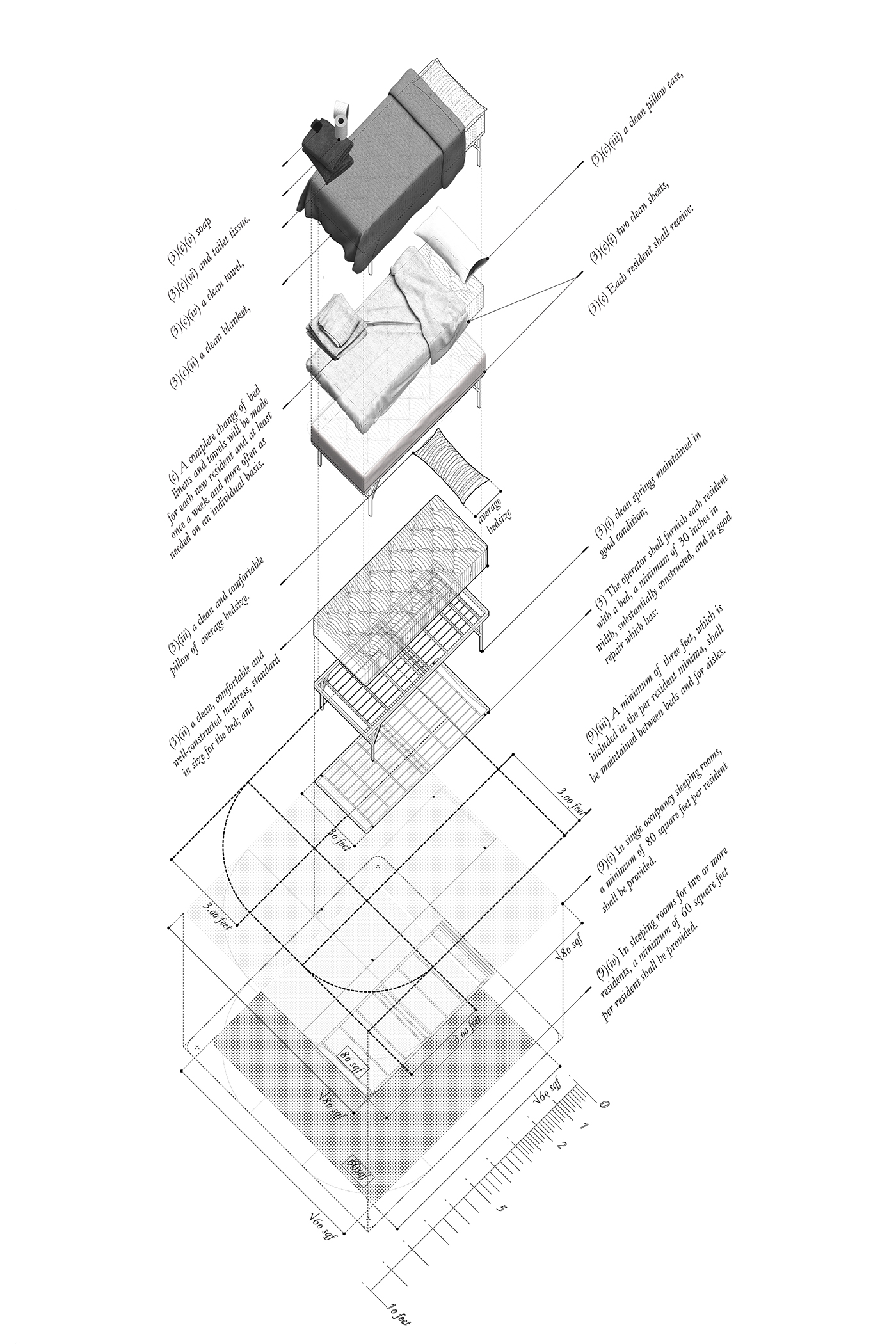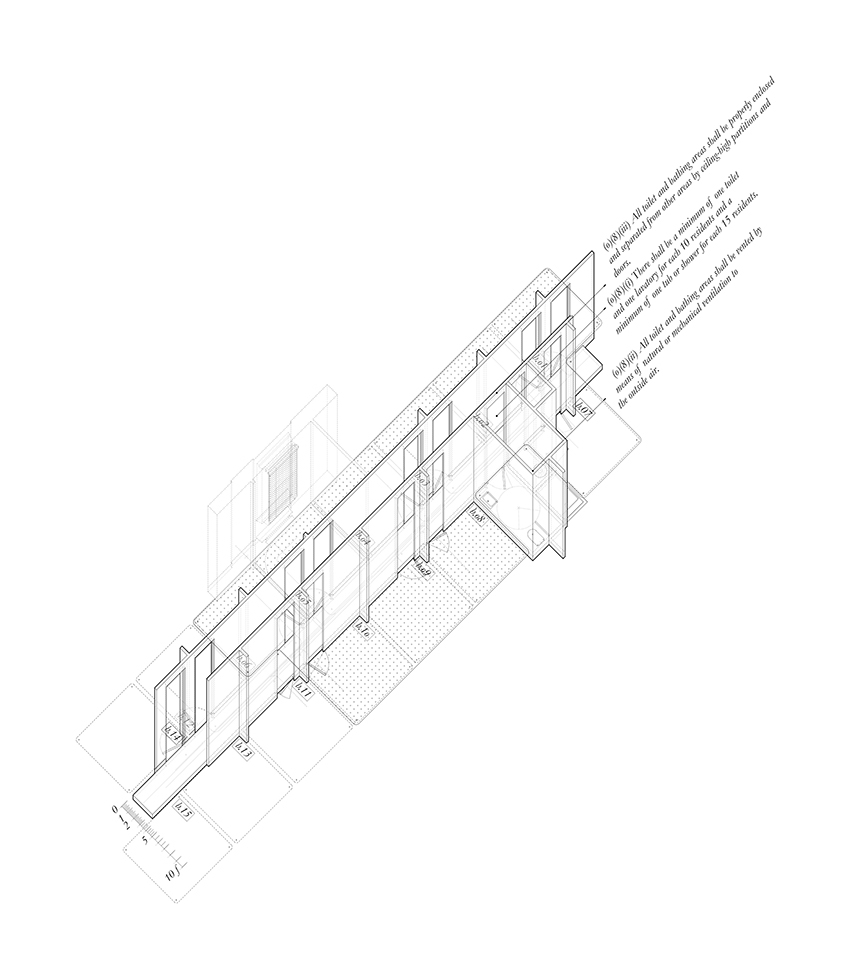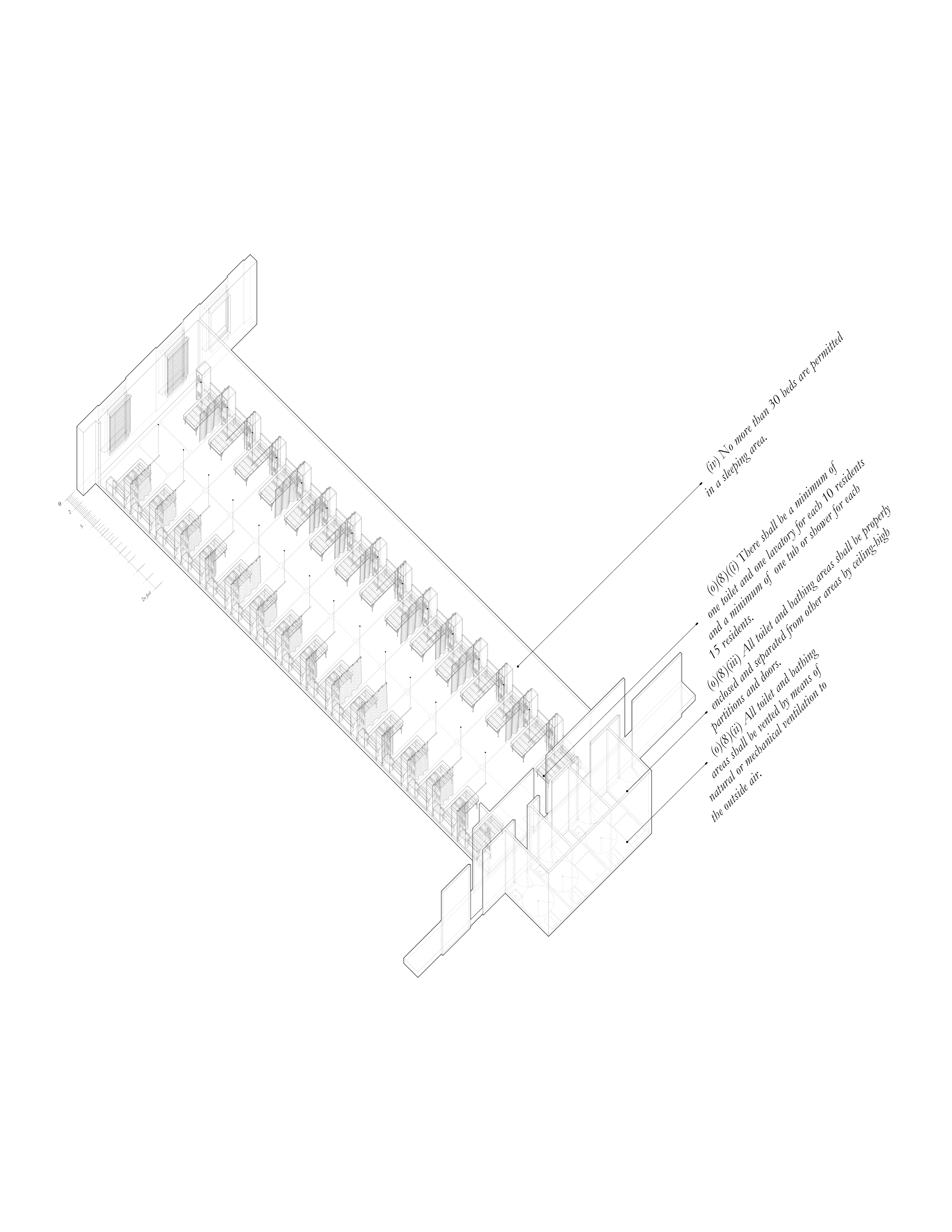Domestic Homelessness:
New York’s Shelter System,
to the Letter of the Law
Collaborators: Mireia Gallego,
Laura Miguelañez
This project aims to unpack how the legal definition of shelter space built and normalized the ideological construct of the homeless subject since 1979, unveiling the mechanisms through which architecture was imbricated within municipal and state institutional policies. The drawings shown here offer a spatial interpretation of the limits determined by law.

These constraints constitute the prescription of minimum standards for shelter interiors. Ultimately, if the presence of homeless individuals on the streets in the 70s and 80s was widely theorized as a transgression of the social construct of public space, the reabsorption of these individuals into the architectural interior of the shelter since 1979 demands an interrogation of the impact of homelessness on the contemporary notion of all domestic space.

All drawings correspond to the Chapter II. *Regulations of the Department of Social Services*. Part 491: Shelters for Adults. Section 900.12: “(j) Furnishings and Equipment, (c) Sleeping areas, (1) Tier I Facilities, (2) Tier II Facilities. Section 900.12: Environmental Standards. Part 900: Shelters for Families” and “(o) Space Requirements for Shelters for Adults, (9) Bedrooms. Environmental Standards.” 18 New York Codes, Rules and Regulations. Comp. Codes R. & Regs. 485.1. The State of New York, January 15, 2009.


